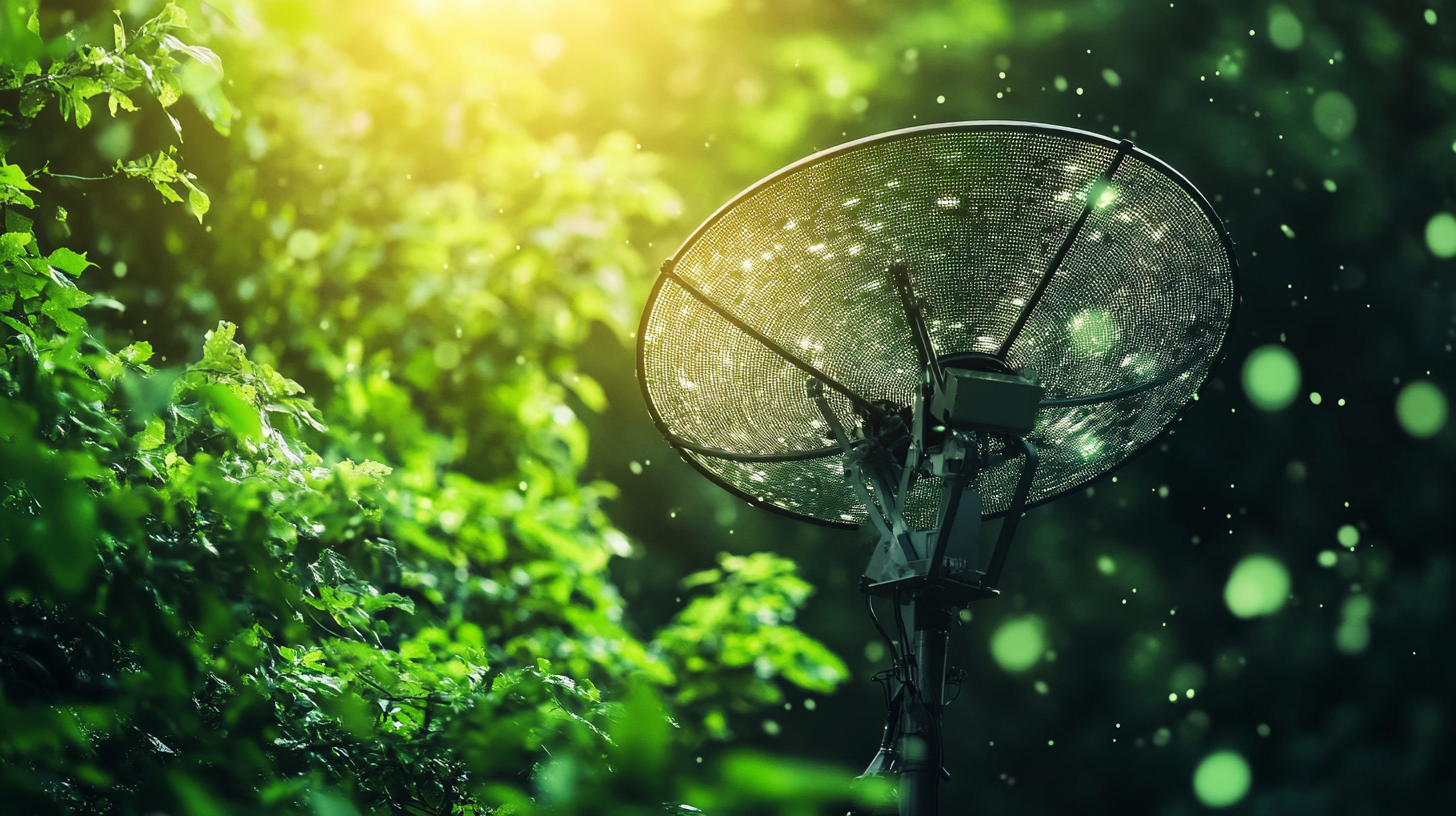Environmental Protection in Antenna Design: IP Ratings and Beyond

Introduction
In the world of professional antenna systems, technical specifications often dominate discussions about performance and capabilities. However, one of the most critical aspects of antenna design—environmental protection—frequently receives less attention than it deserves. The reality is that even the most sophisticated antenna system will fail to deliver its promised performance if it cannot withstand the environmental challenges of its deployment location.
Environmental protection in antenna design encompasses a comprehensive range of considerations, from basic weatherproofing to resistance against corrosive chemicals, extreme temperatures, and mechanical stress. Understanding these requirements and implementing appropriate protective measures is essential for ensuring long-term reliability, minimizing maintenance costs, and maintaining optimal performance throughout the antenna's operational life.
The Foundation: Understanding IP Ratings
Ingress Protection (IP) ratings serve as the universal language for describing an antenna's resistance to environmental intrusion. Established by the International Electrotechnical Commission (IEC), the IP rating system provides a standardized method for evaluating protection against both solid particles and liquids.
Decoding IP Ratings
An IP rating consists of two digits following the "IP" designation. The first digit indicates protection against solid objects, ranging from 0 (no protection) to 6 (complete dust protection). The second digit addresses liquid protection, spanning from 0 (no protection) to 9K (protection against high-temperature, high-pressure water jets).
For antenna applications, common IP ratings include:
IP65: Dust-tight protection with resistance to water jets from any direction. Suitable for most outdoor antenna installations where regular cleaning may be required.
IP66: Complete dust protection with resistance to powerful water jets. Ideal for harsh outdoor environments with potential exposure to high-pressure cleaning or severe weather conditions.
IP67: Dust-tight with protection against temporary immersion in water. Appropriate for antennas in flood-prone areas or marine environments.
IP68: The highest level of protection, offering dust-tight sealing and protection against continuous immersion in water. Essential for submarine applications or permanently submerged installations.
Industry-Specific Requirements
Different industries and applications demand varying levels of environmental protection:
Marine Applications: Antennas installed on vessels or coastal structures face constant exposure to saltwater, high humidity, and corrosive sea air. IP67 or IP68 ratings are typically required, along with materials specifically chosen for marine environments.
Industrial Environments: Manufacturing facilities, chemical plants, and mining operations present unique challenges including chemical exposure, mechanical vibration, and extreme temperatures. IP ratings must be matched to specific environmental hazards.
Urban Infrastructure: City-deployed antennas face pollution, temperature extremes, and potential vandalism. IP65 or IP66 ratings are generally sufficient, but additional considerations for impact resistance may be necessary.
Beyond IP Ratings: Comprehensive Environmental Considerations
Material Selection and Compliance
Environmental protection begins with appropriate material selection. Modern antenna designs must consider not only performance characteristics but also regulatory compliance with standards such as RoHS (Restriction of Hazardous Substances) and REACH (Registration, Evaluation, Authorisation and Restriction of Chemicals).
RoHS compliance requires that lead content in finished products remain below 0.1% of total weight, while REACH regulations address a broader range of potentially hazardous substances. These requirements apply to all antenna components, including housings, connectors, cables, and mounting hardware.
Temperature Considerations
Temperature extremes pose significant challenges for antenna systems. Operating temperature ranges must account for both ambient conditions and heat generated by active components. Typical specifications include:
Operating Temperature: Most professional antennas are designed for operation between -40°C and +70°C, though specific applications may require extended ranges.
Storage Temperature: Systems may need to withstand even more extreme temperatures during transportation and storage, typically ranging from -55°C to +85°C.
Thermal Cycling: Repeated temperature changes can cause mechanical stress and material fatigue. Proper design must account for thermal expansion and contraction cycles.
Mechanical Protection
Physical durability extends beyond IP ratings to include impact resistance, vibration tolerance, and wind loading capabilities. The IK rating system provides standardized impact resistance measurements, ranging from IK00 (no protection) to IK10 (protection against 20 joules of impact energy).
For antenna installations in high-wind environments, survival wind speeds become critical specifications. Professional antennas are typically designed to withstand wind speeds of 55 m/s (approximately 200 km/h) or higher, depending on the installation location and mounting configuration.
Chemical Resistance and Corrosion Protection
Chemical exposure represents a significant threat to antenna longevity, particularly in industrial and marine environments. Effective protection requires both appropriate material selection and proper surface treatments.
Common protective approaches include:
Stainless Steel Construction: Marine-grade stainless steel (typically 316L or A4) provides excellent corrosion resistance for structural components.
Anodized Aluminum: Lightweight and corrosion-resistant, anodized aluminum offers good protection for many environmental conditions.
Protective Coatings: Specialized coatings can provide additional protection against specific chemical threats or UV radiation.
Galvanic Compatibility: Careful selection of dissimilar metals prevents galvanic corrosion, which can occur when different metals are in contact in the presence of an electrolyte.
UV Protection and Weathering
Ultraviolet radiation causes gradual degradation of many materials, particularly plastics and rubber compounds. UV-resistant materials and coatings are essential for maintaining both appearance and performance over extended periods.
Weather resistance encompasses protection against rain, snow, ice, and thermal cycling. Proper design prevents water accumulation, ice formation, and thermal stress that could compromise antenna performance or structural integrity.
Connector and Cable Considerations
Environmental protection extends beyond the antenna itself to include all system components. Connectors and cables often represent the weakest link in terms of environmental protection, requiring careful attention to sealing and material selection.
Key considerations include:
Connector Sealing: Proper gaskets and sealing methods prevent moisture ingress at connection points.
Cable Selection: Outdoor-rated cables with appropriate jacket materials and moisture barriers are essential for long-term reliability.
Strain Relief: Proper cable support and strain relief prevent mechanical stress that could compromise seals or connections.
Testing and Verification
Environmental protection claims must be backed by rigorous testing according to established standards. Common test procedures include:
IP Testing: Standardized procedures verify protection against dust and water ingress under controlled conditions.
Temperature Testing: Thermal cycling and extreme temperature exposure verify performance across specified ranges.
Vibration Testing: Mechanical vibration testing ensures components can withstand transportation and operational stresses.
Salt Spray Testing: Corrosion resistance is verified through exposure to salt spray under controlled conditions.
UV Testing: Extended exposure to UV radiation verifies material stability and color retention.
Implementation Best Practices
Successful environmental protection requires attention to both design and installation practices:
System Integration: All components must work together to maintain the overall protection level. A system is only as protected as its weakest component.
Installation Quality: Proper installation techniques are crucial for maintaining environmental protection. Improper mounting or sealing can compromise even the best-designed systems.
Maintenance Considerations: Regular inspection and maintenance programs help identify potential issues before they compromise system performance.
Documentation: Comprehensive documentation of environmental specifications and test results supports proper system selection and installation.
Future Trends and Developments
Environmental protection requirements continue to evolve with new applications and deployment scenarios:
Smart Materials: Self-healing materials and coatings that can repair minor damage automatically are under development.
Nanotechnology: Nanostructured coatings offer improved protection with reduced weight and thickness.
Recyclable Materials: Increasing focus on sustainability drives development of environmentally friendly materials that maintain protective properties.
Integrated Monitoring: Future systems may incorporate sensors to monitor environmental conditions and protective system integrity in real-time.
Conclusion
Environmental protection represents a critical aspect of antenna system design that directly impacts long-term performance, reliability, and total cost of ownership. Understanding IP ratings provides a foundation for environmental protection, but comprehensive protection requires consideration of multiple factors including material selection, chemical resistance, temperature extremes, and mechanical stress.
As antenna systems become increasingly sophisticated and deployment environments more challenging, the importance of proper environmental protection will only continue to grow. Organizations that invest in comprehensive environmental protection during the design and specification phase will benefit from reduced maintenance costs, improved reliability, and extended system life.
At Renair, we understand that environmental protection is not merely a specification checkbox but a fundamental requirement for delivering antenna systems that perform reliably throughout their operational life. Our commitment to comprehensive environmental testing and protection ensures that our clients receive solutions capable of withstanding the unique challenges of their deployment environments.
Understanding the Innovative Technologies Behind Our Antenna Solutions
At Renair, we utilise cutting-edge technology to design antennas that excel in performance and reliability. Our manufacturing process incorporates rigorous testing to ensure each product meets the highest standards. This commitment to quality guarantees that our antennas provide seamless connectivity for a variety of applications.

Navigating the New Radio Regulations: ITU 2024 Updates and Their Impact on Global Communications
Understand the ITU 2024 Radio Regulations that took effect January 1, 2025. Explore new spectrum allocations for 5G/6G, satellite communications, and IoT applications from the WRC-23 conference outcomes.

The Future of Aviation Antennas: From 5G Integration to Autonomous Flight Communications
Explore the transformation of aviation antenna technology with 5G integration, LEO satellite communications, and autonomous flight systems. Discover how the $1.5B market is evolving to $2.5B by 2033.

5G Antenna Technology Trends: Smart Beamforming and MIMO Innovations Shaping 2025
Discover the revolutionary advances in 5G antenna technology driving the $45.4 billion smart antenna market. Explore massive MIMO, AI-enhanced beamforming, and phased array innovations that are transforming wireless communications.
Our Customers
Lorem ipsum dolor sit amet, consectetur adipiscing elit.
“The team at Renair is always ready to assist, providing expert advice and quality products.”


“Renair’s bespoke antenna solutions have significantly enhanced our system performance.”


“We rely on Renair for all our antenna needs. Their products and service are consistently excellent.”


“Renair’s team provided exceptional support throughout our project, ensuring seamless integration.”


“The quality of Renair’s antennas is unmatched. Our communications have never been clearer.”


“Renair’s customer service is top-notch. They promptly addressed our queries and provided tailored solutions.”


Get in Touch with Us
Contact Renair today for inquiries, partnerships, or to learn more about our solutions.
